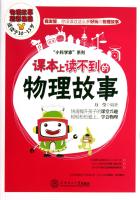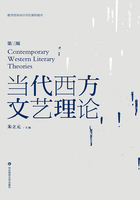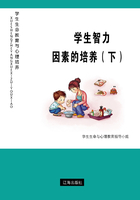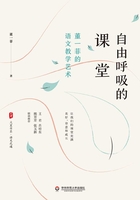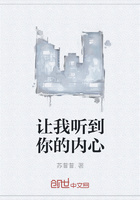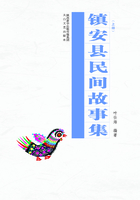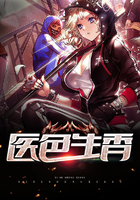武术是打拳和使用兵器的技术。武术是中国传统体育项目之一。本篇介绍的是武术的起源与发展、武术的种类以及中国武术的奥妙。
1.什么是中国武术?
What are Chinese martial arts?
Wushu literally means“martial methods”and was historically called“wuyi (武艺)”or“martial arts”. Throughout human history, wushu have been created and developed for self-defense and survival. Chinese wushu training aims to improve peoples physical ability, health and willpower. It gives individual excellent exercises, an exciting competitive sport, and a basis for self-defense and sparring.
In the West, Chinese martial arts are usually referred to as“gongfu (功夫).”However, the term does not specifically mean“Chinese martial arts.”Rather, gongfu is a philosophy applied to any time-honored pursuit of excellence. It can refer to any endeavor in which a person, over time, refines his or her skills and art through diligent practice as a cook, photographer, artist, and so on. In short, gongfu literally means“hard work,”or“learned skill”through painstaking effort. At present, however, gongfu commonly indicates the enormous variety of martial arts native to China. It is widely thought that there are currently more than 1,000 distinct styles of wushu in China.
Notes:1)self-defense自卫;2)willpower意志力;3)photo-grapher摄影师
2.你能简述中国武术的历史吗?
What is the history of Chinese martial arts?
Traditional Chinese martial arts originated during primitive times when people made attack and defense movements as they hunted. In terms of technique, these early methods were crude and relatively unorganized.
During the Warring States Period, soldiers from different states practiced wushu in winter. One kind of martial art constituted a dance performed during ritual services. The earliest contest of wushu appeared during the Spring and Autumn Period and the Warring States Period and was usually held during the Spring and Autumn.
During the Qin and Han dynasties, there were one-man and two-man pattern of wushu in use, including patterns imitating the movements of various creatures. One of these patterns was the Five-Animal Exercises (五禽戏) which appeared during the Eastern Han Dynasty. During the Tang Dynasty, warriors were chosen and officers promoted through wushu competition. Shaolin martial art became popular at that time. During the Song Dynasty, a school was set up to train military officers in wushu, and it was practiced and preserved also within family clans and religious temples. Down to the Yuan, Ming and Qing dynasties, various forms of wushu were well established in China as well as Korea, Japan,and many other countries.
Notes:1)unorganized无组织的;2)imitate模仿
3.中国武术如何分类?
How can we categorize Chinese wushu?
Styles of Chinese martial arts may be broadly categorized as the Northern style and the Southern style with reference to the geographical regions divided by the Yellow River. The Northern style wushu originate from north of the Yellow River; the Southern style from south of the river.
Another categorization divides into external wushu and internal wushu. External wushu use muscular force, speed and sheer strength to produce power. It is known from its area of origin, such as Northern Shaolin Boxing (北少林拳) or Chang Boxing (长拳). Internal wushu uses“wise force (巧力)”to overcome its opponents. It combines qi (气) energy with muscle strength to produce power; and its best known styles are Taijiquan (太极拳), Xingyiquan (行意拳), and Baguazhang (八卦掌). Training the internal wushu often includes standing meditation and special exercises to foster qi. Some experts think, however, that this categorization is not accurate because any good wushu style should have a healthy balance of both internal and external principles and no wushu, regardless of its technique or training, is purely internal or external.
Notes:1)categorization分类;2)muscular肌肉(发达的),强健的
4.还有其他的武术分类吗?
Are there other categorizations of wushu?
Wushu is also known as fighting strategies, which fall into categories of unarmed and armed combat. Unarmed combat refers to the boxing arts (拳术) and functions as the basis of wushu training. The main forms include Chang Boxing, Southern Boxing (南拳), Taijiquan and Shaolin Boxing. Armed combat refers to martial arts that use weapons (兵器). Although there are more than 400 different types of ancient Chinese weapons, there are only 18 standard weapons used in wushu competition. Some popular weapons include broadsword, straight sword, spear, staff, double-sword, nine-section whip and three-sectional staff. Sometimes a practitioner will create a variation involving two of the same types of weapons.
Modern wushu competition performances fall into six categories:
a. Empty hand forms.
b. Weapon forms.
c. Choreographed routines (involving two or more people).
d. Group practice.
e. Sparring competition.
f. Qigong power demonstration.
Notes:1)choreograph从事编舞;2)routine固定剧目
5.什么是长拳?
What is Chang Boxing?
This system is the foundation for all of the traditional styles of external wushu. It is based on the combined techniques of various forms of Northern Boxing. Chang Boxing is characterized by an open posture, fast, powerful and agile movements, high kicks, jumping and acrobatic techniques. Chang Boxing is very exciting to watch and very demanding to practice. It is well suited for the child or young adult wishing to greatly enhance their strength, speed, agility, flexibility and endurance while developing practical defensive and offensive skills.
Notes:1)agility敏捷;2)flexibility灵活性;3)endurance忍耐
6.什么是行意拳?
What is Xingyiquan (Form and Will Boxing)?
Xingyiquan is a famous internal fighting style created by a Chinese general around 1127 A. D. It is as a powerful straightforward style emphasizing offensive movement; it imitates the fighting techniques of twelve animals—the dragon, tiger, monkey, horse, water lizard, chicken, harrier, swallow, snake, Chinese ostrich, eagle and bear. Mastery of these animal forms yields a variety of simple, effective fighting techniques; and Xingyiquan training increases one’s qi (energy) and muscular strength and produces incredible power and vitality.

